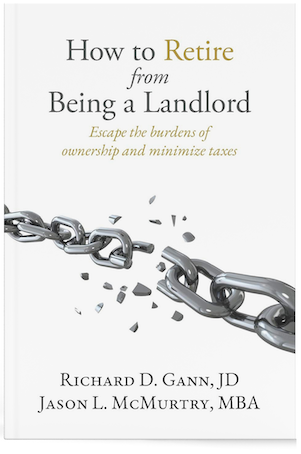
Office vs. Apartments – A Tale of Two Sectors
Office vs. Apartments—A Tale of Two Sectors
The pandemic economy has revealed stark disparities in the risk profiles of different real estate sectors. Across the US, a sea of economic devastation comprises indoor malls, restaurants and hotels, while most grocery stores, online fulfillment centers and drive-through restaurants have flourished. Student housing also was hit hard, though one can expect college students to return to their campuses soon. Some cities are worse off than others, but there is a common pattern—across all markets—of winners and losers in the real estate game.
According to the Mortgage Bankers Association’s CREF Loan Performance Survey for April 2021[i]:
- 2% of the balance of lodging loans were delinquent
- 3% of the balance of retail loan balances were delinquent
- While industrial loans saw a recent uptick in delinquencies, only 1.9% of balances were non-current.
To oversimplify, people have not stopped shopping and eating, but they have stayed home to do both. The same can be said about working—hence the notable contrast in risk and investment performance between the office and multifamily sectors. In the same report referenced above, 2.6% of the balances of office property loans were non-current, up from 2.4% a month earlier. On the other hand, only 1.7% of multifamily balances were non-current, down from 1.8% a month earlier.
Despite eviction moratoriums, class-A apartment communities have continued to demonstrate the lowest risk of loan delinquency among all major sectors of real estate. Office delinquencies are not as bad as retail or lodging, but they are 53% higher than multifamily.
Yet the difference between office and retail goes beyond mortgage payments. Much like retail, office demand may be impaired permanently. According to a recent Wall Street Journal article, “(M)any of the companies ditching real estate are doing well financially; they say they need less space because they plan for more employees to work at least part time from home even after the pandemic is over.” According to JLL, class-A office rents have fallen 13% nationwide during the pandemic. [ii]
Apartments are a different story. National rent-collection rates for multifamily barely moved during the pandemic.[iii] White-collar tenants kept their jobs and worked from home. Millennials are marrying later, procreating later and buying houses later. At the same time, low interest rates and delayed construction have caused SFR housing inventory to dwindle and prices to surge. The current 15-year-high increase in home prices is making it even harder for first-time buyers, further boosting the demand for apartments.[iv] Notwithstanding a jump in interest rates or future spike in apartment construction, it seems the demographic and economic factors driving apartment demand—and rents—are firmly in place.
Shiny office buildings make for pretty brochures and slick website backgrounds. But if you look closely, you may notice that you can see through many office buildings on several floors. When it comes to real estate, empty is never beautiful—it is what’s inside that counts.
_____________________________________________
This is for informational purposes only, does not constitute as individual investment advice, and should not be relied upon as tax or legal advice. Please consult the appropriate professional regarding your individual circumstance.
Statements concerning financial market trends are based on current market conditions, which will fluctuate. Past performance is not a guarantee of future results.
[i] https://www.mba.org/2021-press-releases/may/commercial-and-multifamily-mortgage-delinquencies-declined-in-april – the report represents survey data from $2.0 trillion of the $3.9 trillion in outstanding mortgage debt.
[ii] Office-Space Subleases Flood Market, Wall Street Journal, March 31, 2021
[iii] https://www.nmhc.org/research-insight/nmhc-rent-payment-tracker/
[iv] Home-Price Surge Hits 15-year High, Wall Street Journal, March 31, 2021
This information is for educational purposes only and does not constitute direct investment advice or a direct offer to buy or sell an investment, and is not to be interpreted as tax or legal advice. Please speak with your own tax and legal advisors for advice/guidance regarding your particular situation. Because investor situations and objectives vary, this information is not intended to indicate suitability for any particular investor. The views of this material are those solely of the author and do not necessarily represent the views of their affiliates.
Investing in real estate and 1031 exchange replacement properties may involve significant risks. These risks include, but are not limited to, lack of liquidity, limited transferability, conflicts of interest, loss of entire investment principal, declining market values, tenant vacancies, and real estate fluctuations based upon a number of factors, which may include changes in interest rates, laws, operating expenses, insurance costs and tenant turnover. Investors should also understand all fees associated with a particular investment and how those fees could affect the overall performance of the investment.
Securities offered through Concorde Investment Services, LLC (CIS), member FINRA/SIPC. Advisory services offered through Concorde Asset Management, LLC (CAM), an SEC registered investment adviser. Insurance products offered through Concorde Insurance Agency, Inc. (CIA). 1031 Capital Solutions is independent of CIS, CAM and CIA.
continue reading
Related Posts
Changes are Happening Quickly – Don’t be Left Behind Managing […]
The Burdens of Managing Rental Property in Retirement Retirement should […]
Trusts, Partnerships and 1031 Exchanges One crucial aspect of real […]











